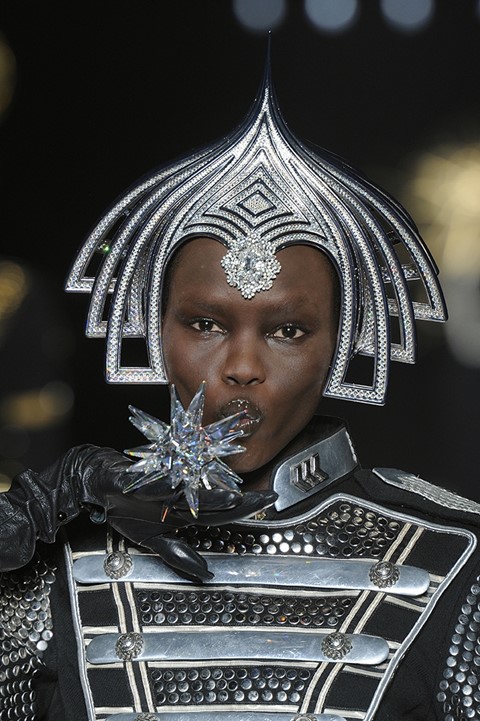Philip Treacy OBE has made millinery into an art. Coming straight out of the world of Alice in Wonderland, he has achieved international fame and recognition for his unique creations...
Philip Treacy OBE has made millinery into an art. Coming straight out of the world of Alice in Wonderland, he has achieved international fame and recognition for his unique creations. After graduating from Central Saint Martins, and with Isabella Blow’s endorsement, he has designed hats for such leading designers as Chanel, Givenchy, Alexander McQueen and Valentino. His pieces have been worn by such iconic figures as Isabella Blow, Sarah Jessica Parker, and, most recently, Lady Gaga. Thanks to the support and commitment of Swarovski, Philip Treacy returned to the London Fashion Week in September 2012, and developed a new line, in collaboration with the leading crystals brand.
How would you connect fashion to elegance?
Everyone approaches fashion like that. People are aiming for elegance, of which there are many different versions. Elegance is all in the mind of the wearer. Somebody can feel elegant without being elegant. It’s a personality. I believe in a democratic approach to fashion: if you feel good, then great. You may not look good, but it’s not the problem.
What is the role of history and art history in your conception of fashion?
I believe in originality primarily. However, it’s important to know what there has been before to aim in that direction. Art history informs us. It informs our mind. I like to look at books, exhibitions, paintings, as a computer, subconsciously taking on information. It may not come out exactly like that, but it may come out in one form or another, later.
Would you describe fashion as a language and a discourse, as Barthes did it?
Yes. Fashion is a language. It’s communication. It’s a club, but the club is open to everybody, because otherwise we’d all look the same.
The word "intellectual" was coined in a time of great political distress. Does fashion have a political role? And in which way?
It depends on what “political” means. You can be political today by wearing a balaclava on stage, or by supporting a political stance. Saying that fashion is political is like saying: you can be a scientist if you wear a lab-coat. It doesn’t make you that person but, in your own imagination, you can be whoever you want to be. Everyone wears fashion to escape the banality of our lives.
How would you relate the concept of "fashion" to the one of "style"?
Fashion is not about clothes. It is about today. Style is being rewritten every day. What was stylish twenty years ago is not stylish anymore: it is clothing.
"Fashion is not about clothes. It is about today. Style is being rewritten every day"
What does fashion have to do with intellectuality ?
I don’t know if it has anything to do with it. I think sometimes fashion is over-intellectualised. Fashion is about the pursuit of beauty and elegance, I feel. But to other people it’s a T-shirt.
Your hats are often made of elaborate materials – from our use of bird feathers to your collaboration with Swarovski. What is the role of materiality in your designs?
The materiality is everything. Every material has its properties and you cannot make a material do something it does not want to do. So understanding the material is the key to the success of the invention. Every material has its properties. Also, materials are the only innovation in fashion: there are new materials being invented all the time. It’s endless.
You are a milliner, and the art of millinery has often been associated with Englishness. Is there a connection between your work and its location in the context of England?
The best way for me to answer that is to say that I make hats for very conservative English women who think that my hats are normal. I like being a hat-designer in England because it’s part of the culture. It’s part of the language, of the landscape. There are hats in many cultures in the world. But there is a fearlessness that’s attached to Englishness, and it’s unquantifiable. English have an inbuilt understanding of the peculiarities of life. They look very conservative in their tweed hunting suits, but they sure don’t want a conservative hat on. There’s an illusion of conservatism, but England is about possibility. And at the same time fashion is about dreams. The Swarovski crystals, for instance, that I am using in my recent collaboration, are the very stuff of dreams. They are the essence of possibility.
In two weeks Donatien will be interviewing Louise Wilson.
